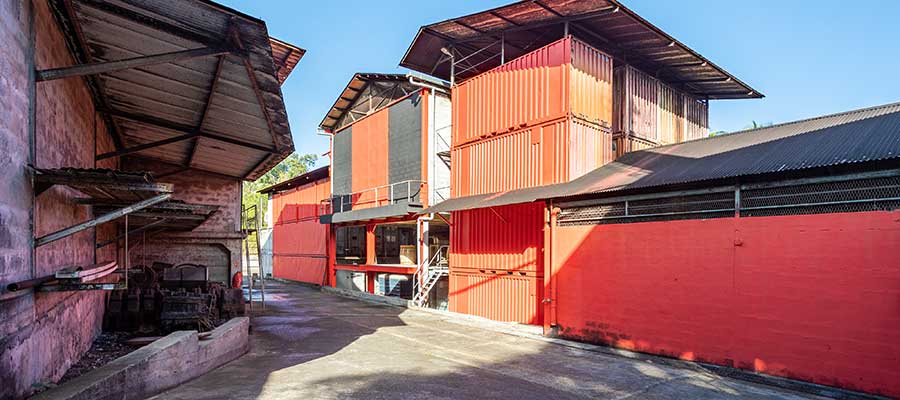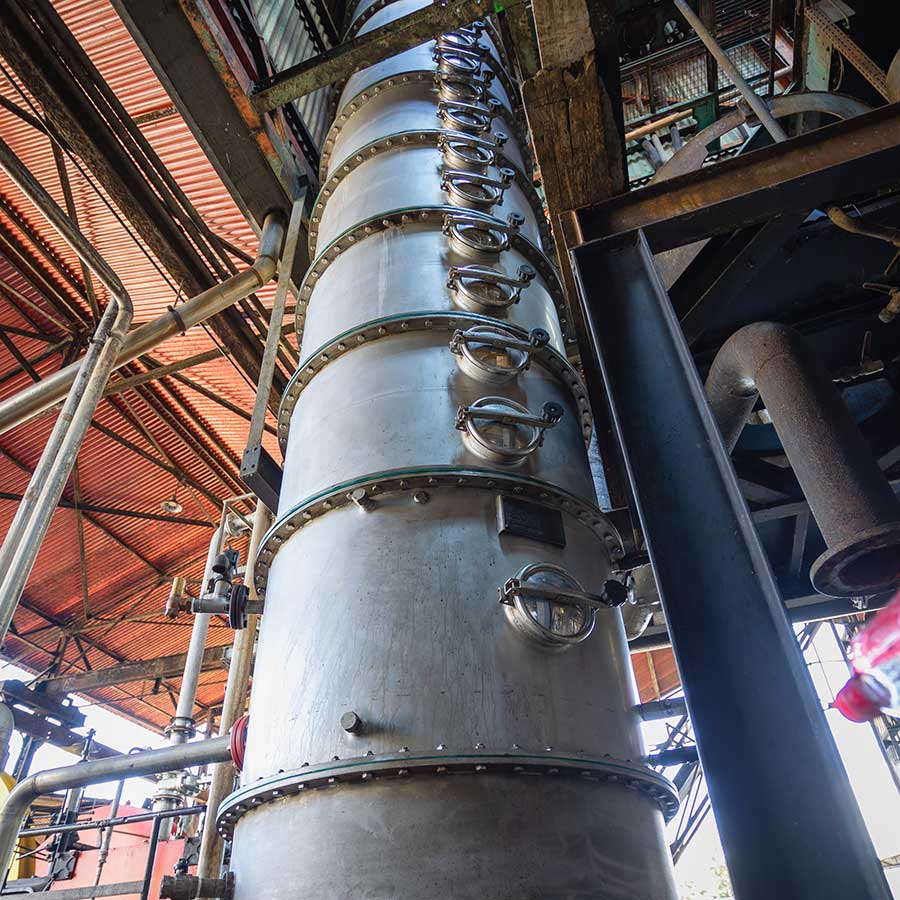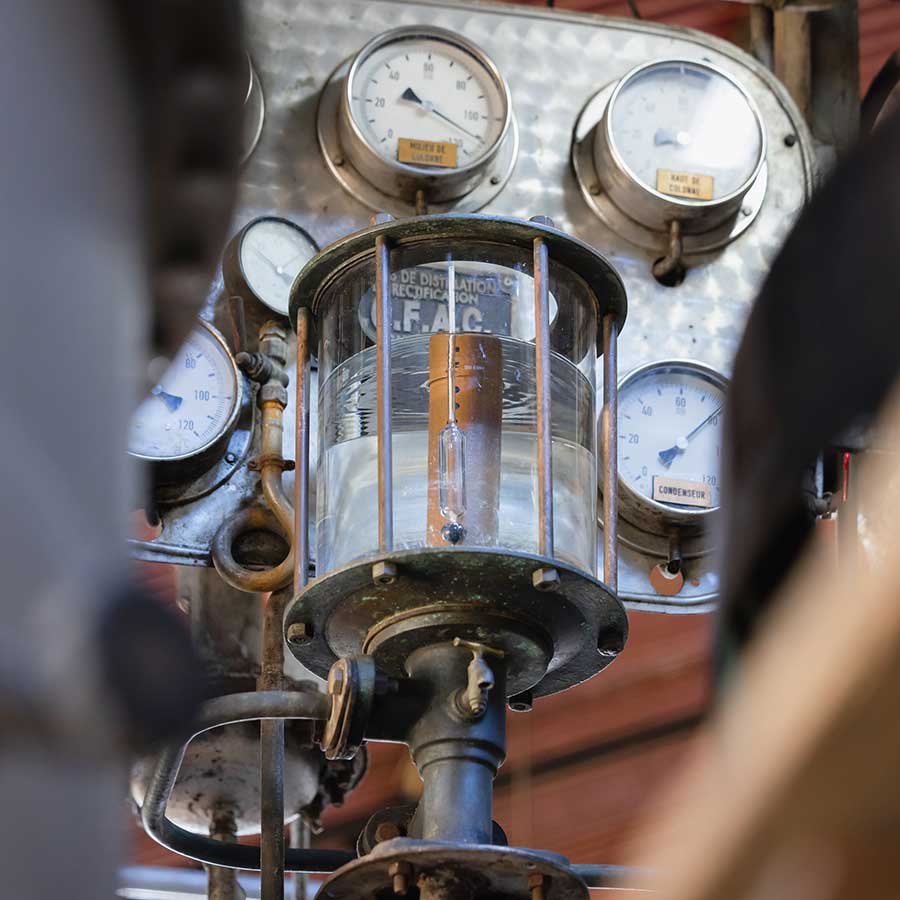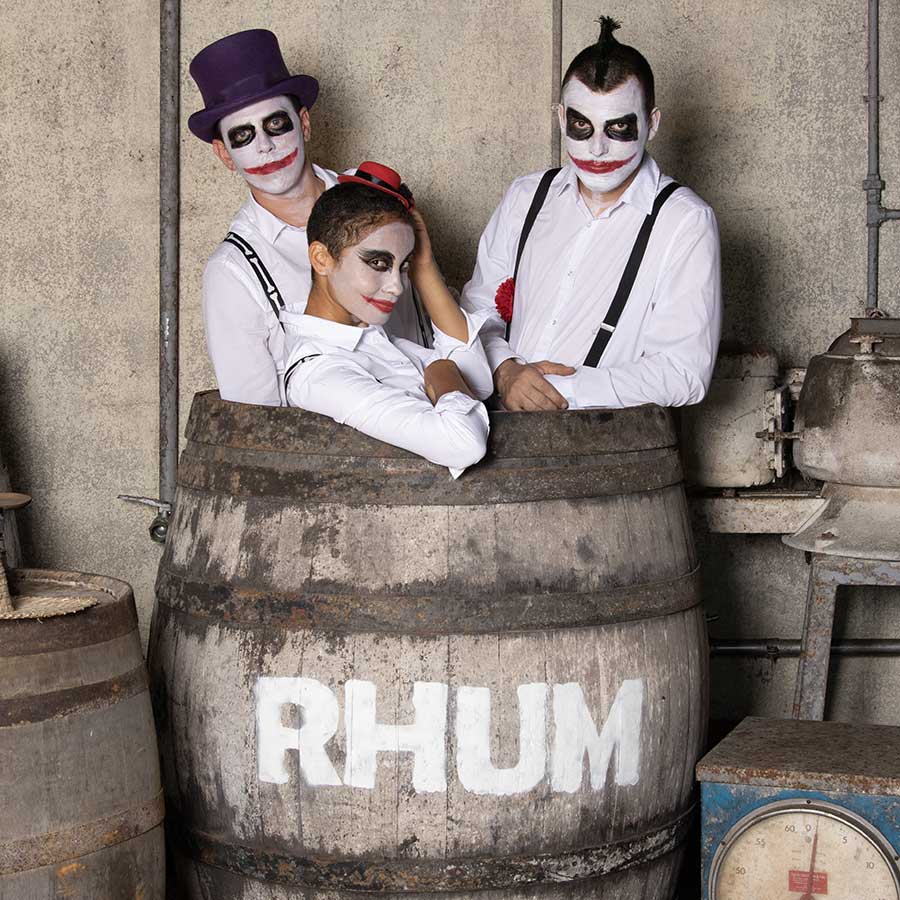Now that we’ve had a quick look at the history of the distillery and how it has moved up the range, let’s try and understand how the rums are produced. Meet Ruidjy Boundo, Montebello’s production manager.
Tell us about the raw materials used to make Montebello rums?
We are an Agricole rum distillery in Guadeloupe, so our raw material is sugar cane. We source it from growers with whom we work closely.
This close contact is essential for Montebello, as it allows us to listen to the growers and ensure that the quality of the sugar cane is respected.
The main varieties we use are green, red and yellow cane. But we work with all kinds of cane, mainly for specific projects, such as black or blue cane.
Where does this sugar cane come from?
Our sugar cane comes from planters working on their land all over Guadeloupe. Our beautiful island is divided into 2 separate islands: Grande-Terre and Basse-Terre, each with its own distinct terroir, and therefore different cane varieties.
We like to highlight this diversity, so we work with Grande-Terre and Basse-Terre (for specific canes like black cane, for example). The cane can either be cut by hand, known as long cane, or by machines (in sections of around 20 cm).
Once the cane has been cut, what happens to it?
The sugar cane is cut and transported directly to the distillery. We check that the cane meets our specifications, and we also check that the brix matches. The higher the brix, the sweeter the sugar cane, the more interesting it is in the manufacturing process.
In less than 24 hours, the sugar cane is picked up and the manufacturing process can begin. Chopping and grinding are the first stages. These are carried out using our Hamilton locomotive engine.
We’re very proud of this old lady from the 19th century, who powers our distillery with steam thanks to the energy created by burning bagasse. It’s unique in mainland Guadeloupe.
What happens at the fermentation stage?
After crushing, the cane juice is transferred directly to the fermentation tanks. The fermentation stage lasts between 48 and 72 hours. It is activated naturally by the process at the foot of the vat. We leave some of the previous production at the bottom of the vat. This is fed by the long cane.
The chopped cane will be added to the bottom of the vat to increase its volume. The bottom of the vat is made up of around 10,000 litres of fresh cane juice crushed during the day. The next day, we’ll fill the vat with 35,000 litres.
I And the day after that, I can start the fermentation process. We use open stainless steel vats that can hold between 35,000 and 45,000 litres. In general, they are stirred as soon as they are full. They are filled to around 80% of their capacity.
And what about distillation?
After fermentation, our cane wine yields between 6 and 8%vol. We will now proceed to distillation. Our beautiful column has recently been renovated and sits proudly in the centre of the distillery.
Thanks to this and the many other renovations we are currently carrying out, we have been able to triple our annual production while improving the quality of our rums through strict quality control.
At what degree does the rum come out?
The rum comes out of the column with an alcohol content of 80%. Every day, our teams taste this production. This is a crucial moment, which will enable us to classify these crude rums according to their dominant aromas: herbaceous, sweet, piquant, sweet.
Now it’s time for our rum to rest for a fortnight in vats. After these 2 weeks, another tasting is carried out to determine the future of our product: brut de colonne, premium white, ageing.
How does the ageing process work?
I work closely with Paul on the ageing of our rums. The white rum is first stored in inert vats and stirred with compressed air for two months to get rid of certain aggressive alcohol molecules. After this stage we begin a slow alcoholic reduction, the degree of the rum will depend on the target age count.
The further we wish to go in the age count, the higher the degree we put in casks. We mainly use old bourbon casks, but also ex-Cognac red casks, new French oak and a few atypical casks for the La Rencontre range. The most specific aspect of the way we age our rums comes from the cellar itself. Old steel containers. Directly hit by the sun, the barrels inside undergo extreme maturation conditions.
Heat, humidity and significant temperature changes between day and night accelerate the interaction between the wood and the rum. This will give our aged rums their unique aromatic profile and generously feed the angels, who are already very greedy in the West Indies…
How do you choose the French casks you use?
Paul goes to the estates and cooperages to make the selections. We have to like the wine or spirit and the producer has to stand out in terms of the originality or quality of his products.
The rum is then selected according to the aromatic profile of the old cask. The idea is to create a taste encounter between two worlds, two producers and two areas of expertise. For the top-of-the-range cuvées, we select from among our best old rums and taste as a team to make a coherent choice that satisfies all types of palate.
What is the profile of Montebello rums?
We are proud of our 5 new gold medals at the Spirit Selection competition in Brussels. What we’re looking for above all is quality products, thanks to innovation while retaining the DNA of Montebello rums.
We want to ensure that Montebello rums retain their fruity, herbal yet rounded character. We want it to have character, but to appeal to everyone.





